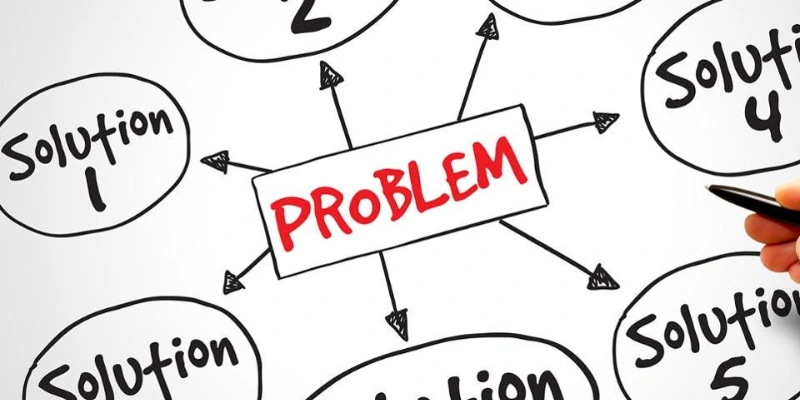Real World Problems: Navigating Life’s Challenges with Resilience
Updated: December 16, 2024
6
Life, in all its beauty, also presents a series of challenges. These challenges range from personal struggles to global crises, but they share one thing in common: they affect us all. No matter where we live, what we do, or how much we’ve accomplished, we all face problems that can feel overwhelming. Understanding and confronting these problems is a part of the human experience. In this article, we’ll deeply dive into some of the most pressing real-world problems we deal with daily and discuss how we can navigate them with resilience.
Understanding Real World Problems
H3: What Are Real World Problems?
A real world problem is simply a challenge or issue that people encounter in daily life. It can be anything that creates difficulty, stress, or uncertainty. These problems can be personal, social, economic, or environmental. The key to real-world issues is that they impact people personally, sometimes in ways we can’t avoid or control.
- Financial struggles, such as debt or unemployment
- Relationship issues, such as conflict or communication breakdown
- Health concerns, such as illness or injury
- Environmental problems, such as climate change or pollution
- Social injustices, such as inequality or discrimination

Why Should Students Care About Solving Real-World Problems?
It’s easy to assume that real-world problems are for adults to deal with, but today’s students have the potential to make a big difference. Here’s why students must engage with these challenges:
- Develop Critical Thinking Skills: Solving complex problems requires thinking creatively and critically analyzing situations from various angles.
- Create Positive Change: By working on real-world problems, students can contribute to improving their communities and the world.
- Enhance Learning: Applying knowledge to real situations deepens learning and makes education more engaging.
- Prepare for the Future: The future will require innovative thinkers who can solve problems. Starting today helps prepare students for tomorrow’s challenges.
Now that we know the importance of solving real-world problems let’s explore some issues that students can address.
Types of Real-World Problems Students Can Solve
Environmental Issues
Climate Change and Pollution
Climate change and pollution are pressing issues affecting ecosystems and communities worldwide. Rising global temperatures, deforestation, and pollution of our oceans and air are all causes for concern. However, students can help by raising awareness, initiating recycling programs, or designing new technologies to reduce carbon footprints.
Project Ideas:
- Design a school-wide recycling program that helps reduce waste.
- Create a digital campaign to raise awareness about climate change and its effects on local wildlife.
- Build prototypes of energy-efficient devices using sustainable materials.
Health and Well-Being
Mental Health Challenges
Mental health has become an increasingly important topic, especially for students. Issues like stress, anxiety, and depression affect many young people. Students can make their schools and communities healthier and happier by addressing mental health.
Project Ideas:
- Start a peer support group at school to offer mental health resources and encourage open conversations.
- Develop an app that provides mental health tips, exercises, or ways to check in on friends.
- Organize awareness campaigns or workshops on mental health.
Education Access and Inequality
The Education Gap
Across the world, millions of children and adults lack access to quality education, leading to cycles of poverty and limited opportunities. Students can address this by working on initiatives to increase education access or creating tools that help people learn more effectively.
Project Ideas:
- Develop an online tutoring program for younger students or underprivileged communities.
- Create educational content (videos, infographics) that makes learning fun and engaging for children in remote areas.
- Partner with local schools or libraries to set up book drives or tutoring initiatives.
Social Justice and Equity
Poverty and Hunger
Poverty and hunger are global issues that many communities continue to face. Students can help solve these issues by raising awareness and creating projects that provide food and essential resources to those in need.
Project Ideas:
- Organize a food drive to provide meals for local shelters or homeless people.
- Start a community garden where students can grow food and donate the harvest to local food banks.
- Launch a fundraising campaign to support organizations that tackle poverty or hunger.
Technology for Good
Technology in Education
The world of technology offers endless possibilities to solve real-world problems. Technology can be a powerful tool, from creating apps to help students learn better to developing innovative devices that make life easier.
Project Ideas:
- Design an educational app that teaches coding to younger children or helps with basic math skills.
- Build a website or mobile app that helps local businesses increase their visibility and sales.
- Create a digital platform that connects volunteers with people in need, like seniors who need help with errands.
Real-World Problems for Math Students
Many real-world problems can also be solved with mathematics. Math is not just about numbers and equations – it’s about applying logic and reasoning to solve problems. Here are a few examples of real-world problems that can be tackled with math:
Traffic Congestion
Math can help reduce traffic congestion in urban areas. Students can find solutions to improve road efficiency and reduce emissions by analyzing traffic patterns and creating models.
Project Ideas:
- Use mathematical modelling to predict traffic patterns and suggest improvements to public transport systems.
- Analyze the effectiveness of traffic light timings and create more efficient traffic flow models.
- Research and propose public transportation alternatives that can reduce congestion and pollution.
Energy Consumption and Sustainability
Math can be used to calculate energy consumption, project future energy needs, and design energy-efficient systems. Students can use mathematical concepts like statistics, calculus, and algebra to solve problems related to sustainability.
Project Ideas:
- Calculate the energy consumption of different appliances in your school or home and suggest more energy-efficient alternatives.
- Analyze the energy savings of solar panels and create a budget proposal for schools or homes to implement renewable energy sources.
- Develop a mathematical model that predicts energy consumption patterns in a given area.
Budgeting and Finance
Many students don’t realize that learning math can help them with personal finances and budgeting. Understanding how to save, invest, and manage money is a key skill that can benefit students later in life.
Project Ideas:
- Create a student budgeting app that helps them manage their weekly allowance or part-time job earnings.
- Research the mathematics behind interest rates and compound growth to help people save money more effectively.
- Design a financial literacy program for younger students to help them understand saving, investing, and budgeting.
Real-World Problems for Kids
Even kids can tackle real-world problems and develop solutions from a young age. Here are some simple yet impactful ideas:
Helping the Environment
Teaching kids how to take care of the environment from an early age encourages sustainable habits that last a lifetime.
Project Ideas:
- Start a school-wide trash clean-up day and educate classmates about the importance of keeping the environment clean.
- Build birdhouses or plant trees to help local wildlife thrive.
- Organize a recycling contest weekly to see who can recycle the most materials.
Community Building
Building stronger communities is something kids can do by helping out in their neighbourhoods and schools.
Project Ideas:
- Create a “buddy system” in school to help new students feel welcome.
- Host a community event, such as a sports day or talent show, to unite people.
- Set up a free library in your neighbourhood where people can borrow and donate books.

Real-World Problems That Can Be Solved with Technology
Technology continues to evolve, and with it comes the opportunity to solve real-world problems innovatively. Students today are more tech-savvy than ever and can use their skills to create solutions that make a real difference.
Health Monitoring and Fitness
The advancement of wearable devices and health apps has revolutionized how we monitor our health. Students can explore ways to create technology that helps people improve their fitness or manage chronic conditions.
Project Ideas:
- Develop a fitness app that tracks daily physical activities and encourages healthy habits.
- Design a wearable device that helps people with diabetes monitor their symptoms and medication.
- Build a virtual reality tool to help people learn exercises that promote mental and physical well-being.
Food Security
Technology can be a game-changer when it comes to solving issues related to food security. By leveraging technology, students can devise ways to reduce food waste or improve food distribution.
Project Ideas:
- Create an app that helps local farmers connect with consumers to reduce food waste and increase sales.
- Develop a system that allows people to donate surplus food to local food banks.
- Build a smart fridge that helps people track expiration dates to reduce food waste.
Conclusion
The world is full of problems, but that doesn’t mean we should avoid them. Students have a unique opportunity to engage with and solve some of the most pressing challenges of our time. Students can make a real impact through environmental activism, using technology for social good, or solving complex mathematical problems. By addressing real-world problems through school projects or personal initiatives, students contribute to their communities and gain valuable skills to serve them throughout their lives. So, if you’re a student, think about what problems you’re passionate about and how you can make a difference. The world is waiting for your ideas!
FAQs
What are real-world problems?
Real-world problems affect people’s everyday lives, communities, and the planet. These problems can range from global issues like climate change to local ones like improving public transportation or access to education.
Why should students care about solving real-world problems?
Addressing real-world problems can help students develop critical thinking and problem-solving skills. Tackling these issues also allows them to contribute to positive change, deepen their learning, and prepare for future challenges.
How can students solve real-world problems?
Students can solve real-world problems by engaging in projects, using creativity, and applying the knowledge they’ve learned in school. For example, they can start initiatives to reduce waste, design apps to help communities, or create awareness campaigns.
Can real-world problems be solved using technology?
Yes, technology plays a huge role in solving real-world problems. Innovations like apps, websites, and devices can improve health care, reduce pollution, enhance education, and help address many other global challenges.
What are some examples of real-world problems for students to solve?
Examples include environmental issues like pollution, health challenges like mental health awareness, social issues like hunger and poverty, and technology solutions like creating educational apps or energy-efficient systems.
Please Write Your Comments